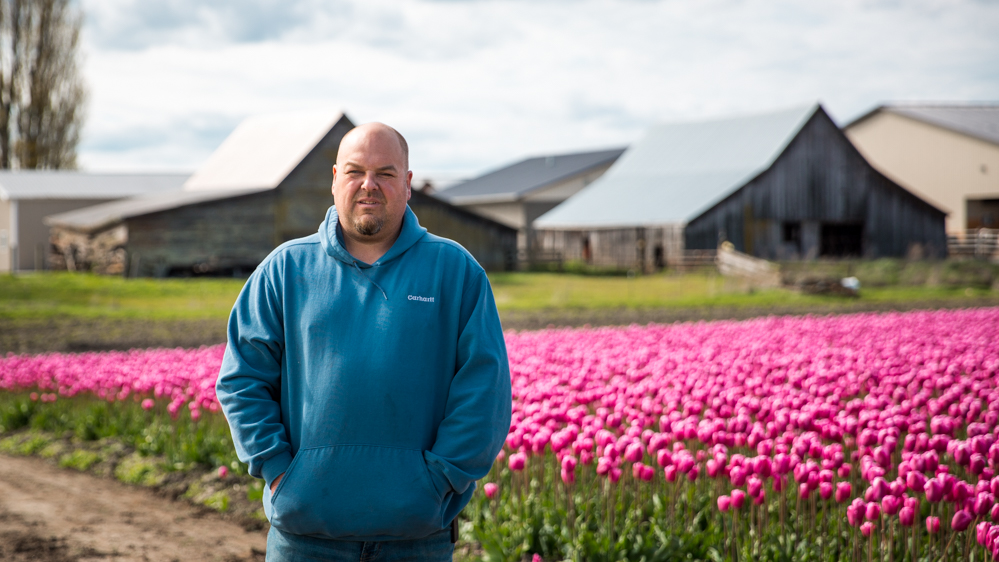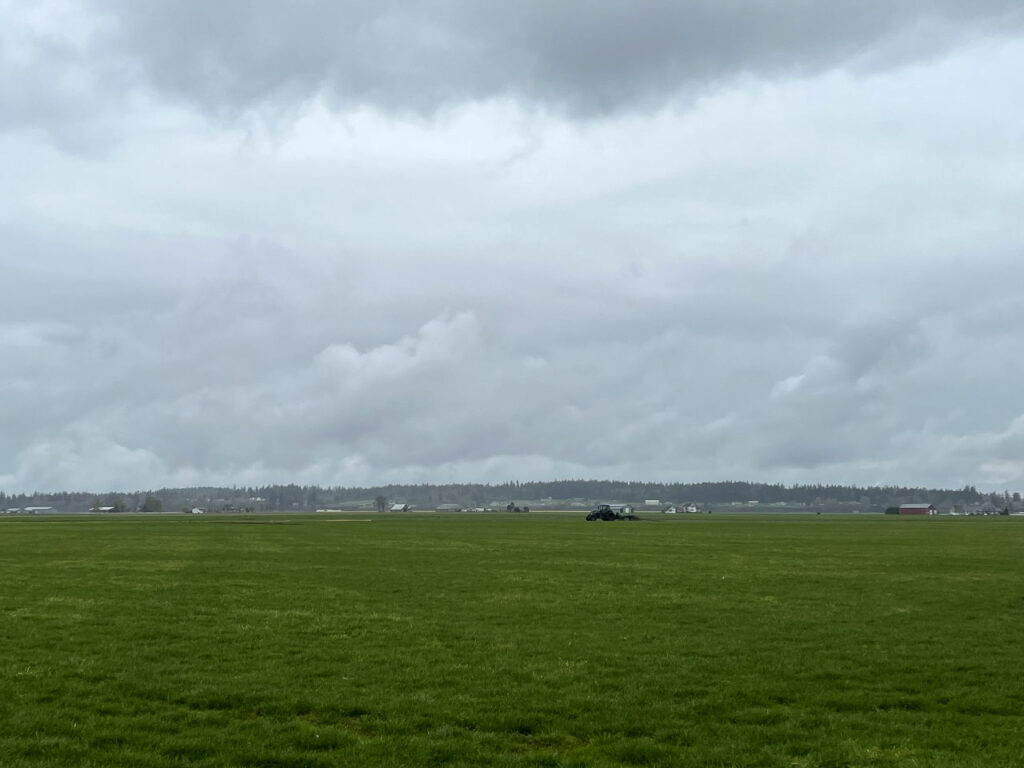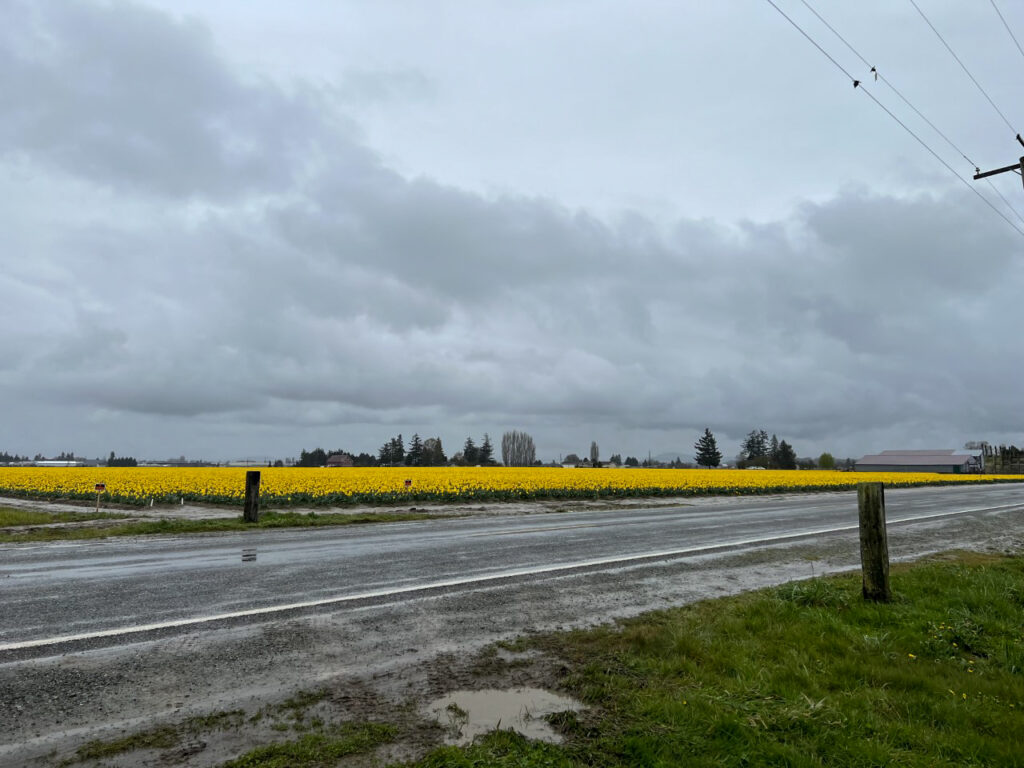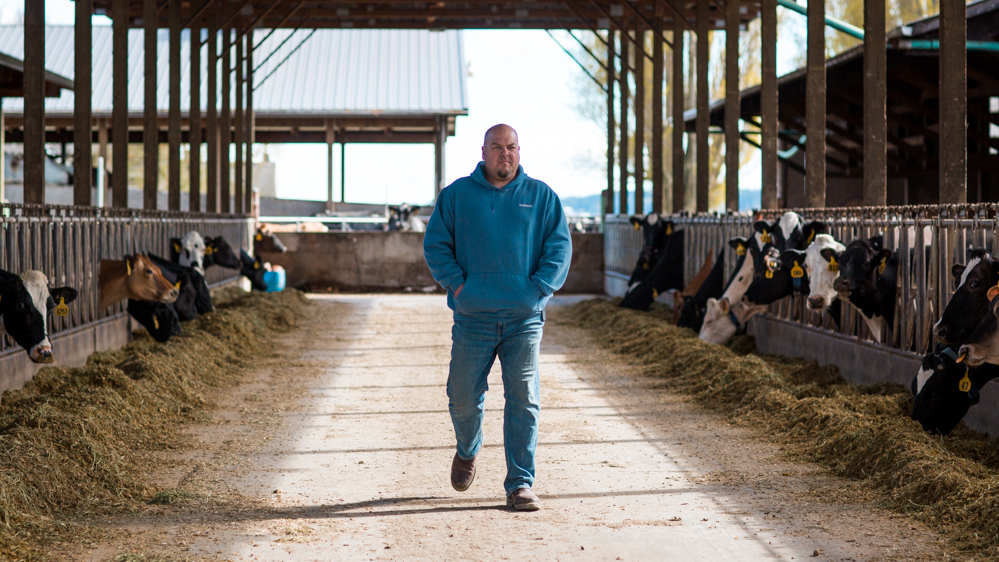If you have ever driven through scenic Skagit Valley, you may have noticed that a field that once grew daffodils is just a grass field the following year.
Why?
Is the farmer indecisive, bored of growing daffodils, or is there a good reason for switching crop fields? There’s a particularly good — and scientific — reason to plant different crops in a field from year to year – it’s a practice called crop rotation.
“20 years ago, in my Dad’s generation, you farmed the land you owned,” said Jason Vander Kooy, co-owner of Harmony Dairy. “Today, we all work together… the potato farmer can only grow every three years and needs something in between. There needs to be a rotation and so many years in between [certain crops].”
Skagit Valley is known for its diverse and abundant farmland. The region’s mild maritime climate, fertile soil, and ample rainfall make it ideal for growing a wide variety of crops (over 80 in fact), including berries, flowers, and vegetables.
The area is also home to many family farms that have been passed down through generations and contribute to the area’s rich agricultural heritage. Vander Kooy and Harmony Dairy are one of these family-run farms.
His father immigrated to the area from the Netherlands in 1968, sponsored by a local dairy farmer after the Dutch government condemned their centuries-old family farm to build a highway.
The Vander Kooy family farm has around 700 cows and in 2009, they bought a second nearby farm that houses another 700 cows. Vander Kooy owns both with his brother, Eric, who manages the cows and assists with managing the crops.

That’s where feed for the cows comes into play. They grow feed, like alfalfa and grass, and rotate other crops with neighboring farms, including Skagit’s famous daffodil and tulips fields.
Crop rotation is a crucial aspect of sustainable agriculture and can help diminish some of the environmental impacts of farming and work towards supporting soil health for future generations.
It is also a vital practice at Harmony Dairy. The dairy spans over 2,000 acres, with an added 2,500 acres shared with nearby farms.
“It’s like chess. We all meet in January and compare field charts. ‘Hey, I need this, I’ll trade you for this crop, what do you have?’”
Planting the same crop in the same field can deplete the soil of certain nutrients – creating depleted fields. Crop rotation helps support soil health by replenishing nutrients with those needed by another, such as with corn and potatoes. Potatoes are a more demanding crop, while corn can thrive in depleted soil and help the nutrients recover.
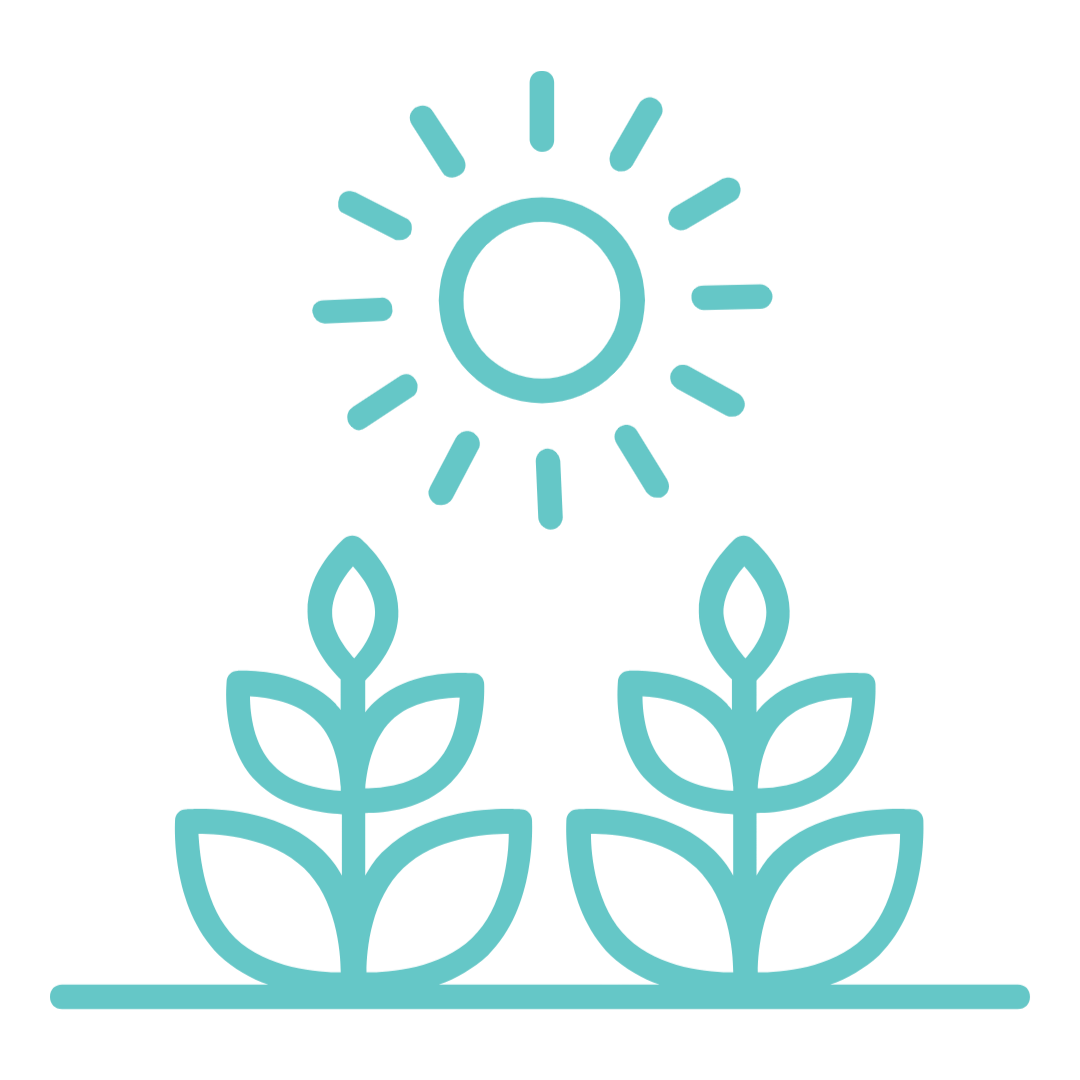
A prime example of this is Vander Kooy’s partnership with nearby farms. By planting filler crops and pumping gallons of nutrient-dense manure from his farm, he’s able to trade one of his dairy’s fields for a couple of neighboring crop fields that need rotation and rest.
Rotating crops in a particular area can decrease soil depletion and the usage of pesticides and fertilizers by disrupting pest life cycles and decreasing populations. This is because different crops have varying nutritional requirements and susceptibilities to diseases and pests.
“Every crop has its own unique pressures or disease. Rotation is key in keeping the soil healthy and limiting the use of commercial stuff,” said Vander Kooy.
Improving soil health helps with plant growth, biodiversity, resilience, water quality, and perhaps most importantly – carbon storage. Soil is a major storehouse of carbon and healthy soils can help mitigate climate change by sequestering carbon from the atmosphere. Healthy soils have elevated levels of organic matter, which can hold onto carbon for many years.
“There’s a unique value in farmers working together,” said Vander Kooy.
Maintaining healthy soil and working together as a community are essential for the long-term health of our planet and the ability to keep our neighborhoods nourished.
